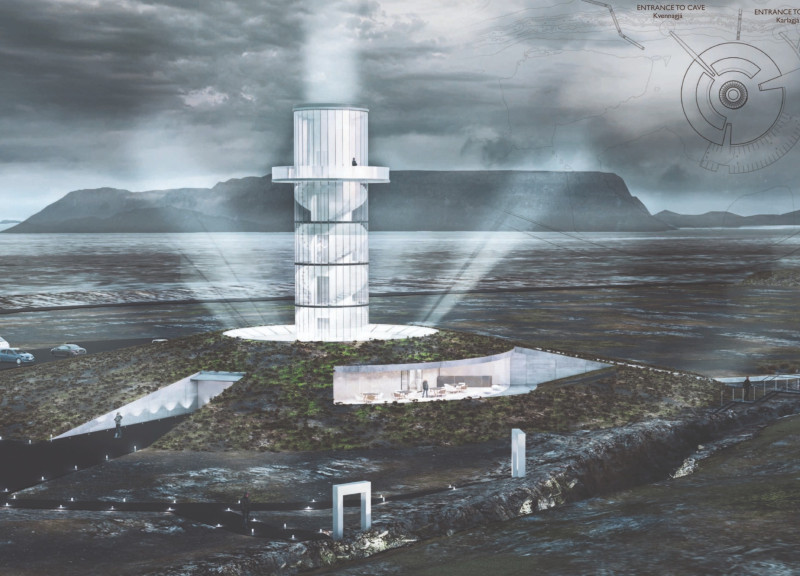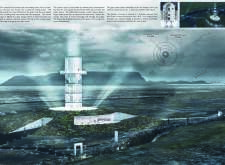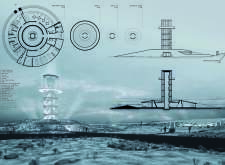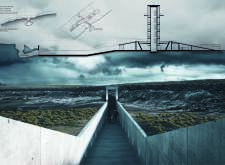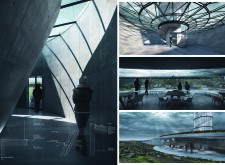5 key facts about this project
The design located in Kvennagjá and Karlagjá engages thoughtfully with its natural surroundings while providing a space for visitors to appreciate the landscape. Focused on creating an observation point, the structure draws inspiration from the unique geological features of the site, making it a natural extension of the environment rather than a separate entity. The overall concept highlights a connection to nature and complements the rugged terrain.
Volcanic-inspired Structure
Rocky soil in the area serves as the foundation for the viewing tower, reflecting a volcanic theme. This design choice enhances the visitor experience by fostering a sense of place that aligns with the geological characteristics of the region. The addition of a grass roof allows the building to blend in with its surroundings, supporting eco-friendly practices and ensuring that the landscape retains its integrity.
Central Space and Light Integration
At the heart of the design is a central area illuminated by a glass canopy. This feature brings natural light into the interior, establishing a connection with the outdoors. The use of glass provides clear views of the scenic landscape, inviting visitors to experience the surroundings more fully. This thoughtful arrangement contributes to an atmosphere that feels open and engaging, helping visitors transition between inside and outside.
Functional Organization and User Experience
The layout focuses on user experience, with walkways designed to mimic cave formations. This approach creates various spaces that support different functions, such as a museum-shop and a cafeteria. The design also plans for practical visitor amenities, including future bathrooms and lockers, addressing essential needs while enhancing the overall visit.
Architectural Influence and Aesthetics
The design incorporates influences from classical architecture, particularly seen in the elevator that nods to a Palladian staircase described by John Soane in 1819. This classical reference brings an element of complexity while maintaining a straightforward form. As light and shadow play across the structure, architectural details come to life, adding depth to the relationship between the building and its natural setting. The flowing lines and shapes guide visitors to engage with both the built environment and the beautiful landscape beyond.


